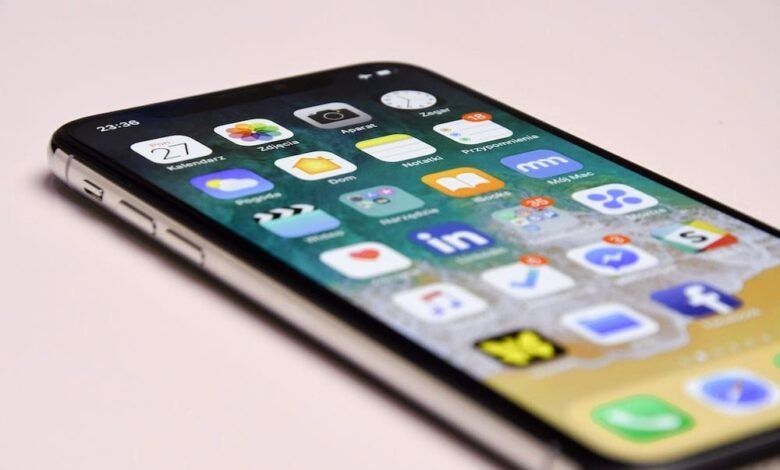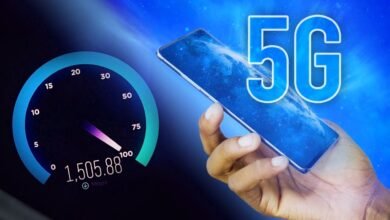How to save internet data on your iPhone?

Is your iPhone (or iPad) already out of internet data even before your mobile plan is renewed? To avoid going outside the package or having to switch to a more generous and expensive contract, know that there are different ways to save your data. Discover our tips to save internet data in the rest of this tutorial.
Save internet data on your iPhone
1. Control your data consumption
Above all, it is important to see the amount of data already consumed. To do this, go to Settings, then select Cellular Data.
We also recommend that you reset your consumption to zero every month. Do not hesitate to create an alert to remind you.
To perform a reset, follow these steps:
- In Cellular data, scroll to the bottom of the page.
- Tap Reset Statistics.
For more control over your internet data usage, you can install the Data Usage app.
This application measures your data and Wi-Fi usage in real-time. It operates either through the app itself or through the Today mini-app (widget), which can be added to your Notification Center.
It will ask you to enter the data quota included in your package in order to then calculate the daily consumption to be respected and thus avoid running out of fuel before the end of the month.
Related: Android or iPhone? How to buy a new mobile phone in 2021
2. Wi-Fi support
As of iOS 9, you can use the Wi-Fi Assist feature. It allows users to automatically switch to a mobile data connection when Wi-Fi is not functioning properly.
It has often been held responsible for consuming your data using the mobile network when the Wi-Fi connection is unstable. If you also think it is the cause, you can turn it off.
Go to Settings, on Cellular Data, then uncheck support WiFi.
Apple has also imposed some limits, namely that it will not work if you use your data from a foreign country. Some apps, such as audio and video streaming apps, won’t benefit from Wi-Fi Assist, unlike Safari, Mail, Maps, or Apple Music.
3. Disable apps: Save internet data
iOS 7 introduced the possibility of deactivating the application (s) likely to tap into your data.
To do this, go to Settings → Cellular data, then turn off apps.
This will prevent them from updating in the background and at the same time reducing your battery power consumption.
Related: How to clear iPhone memory and cache?
4. Disable your 3G and 4G connection
If you wish, you can also temporarily deactivate your data. For example, one week before the end of the renewal of your plan, so that you no longer run out of data.
To deactivate them:
- Go to Settings
- Go to Cellular data
- Disable them
Thus, your data, emails, notifications, and Internet browsing will pass through the Wi-Fi connection. Your battery will also be preserved.
5. Disable automatic video playback
Autoplaying videos on Facebook and Twitter isn’t new to iOS. It allows videos appearing on your newsfeed to play automatically when you hover over them. Even when you are using 3G/4G.
To save your data, you should configure your settings and specify read-only through your Wi-Fi connection.
Facebook:
- Open Facebook, click on the three horizontal bars at the bottom of the screen.
- Go to Settings and Privacy
- Scroll down, then in Media & Contacts go to Videos & Photos
- Tap on the AutoPlay option and select your preference
Twitter:
From your profile, go to Settings & Privacy → Data usage → Auto-play videos.
To finish, choose: On cell phone or on Wi-Fi or Only Wi-Fi.
Twitter Lite:
In April 2017, Twitter released Twitter Lite, its lightweight version for smartphones.
This lightning has been designed to navigate faster, occupy less space than its predecessor, and of course, save your data! To access Twitter Lite from your iPhone: go to mobile.twitter.com.
Select your profile icon, then turn on Data Saver. Reload your timeline and you’re all set!
Related: How to delete Other storage on your iPhone
6. Disable apps that require 3G and 4G
FaceTime:
Granted, FaceTime is great for video calls with 3G or 4G.
However, this application is less practical when your data is very limited. If this is your case, we recommend that you use traditional calls and turn off FaceTime. This will also block any incoming calls made with this application.
To deactivate it:
- Go to Settings → Cellular data.
- Scroll down to FaceTime.
- Disable it.
iCloud drive:
Go to Settings → iCloud and turn off the iCloud Drive. Your data will no longer be used by iCloud, and its updates will only run if you are connected to a Wifi network.
Also, you can prevent certain apps from saving documents and other data to the Cloud, you just have to deactivate them one by one.
If you regularly use Apple’s iWork apps, such as Pages, Keynote, your iPhone may be syncing large documents over your mobile connection. It would therefore be wise not to let it happen.
7. Prevent iTunes from using your data
As for iTunes, leaving it on isn’t recommended either.
To turn it off, go to Settings → iTunes and App Store. Then, turn off Cellular Data.
If you have an Apple Music account, make sure you have Cellular Data turned off as well. To do this go to Settings → Music → Cellular Data.
Related: MirrorGo –Perfect Screen Mirroring App for iPhones
8. Avoid roaming charges: Save internet data
If you are going abroad, we advise you to deactivate Roaming, internet access will be blocked during your trip. Of course, if you still want to use your data, nothing prevents you from leaving it enabled.
For it :
- Go to Settings → Cellular Data.
- Just below, press Options.
- Disable Data Abroad.
Note that you also have the EU Internet feature which you can turn off. This function is the result of a European agreement. If, for example, you travel to the Netherlands and want to call, send SMS and use your data, you will not pay any extra.
Indeed, the price will remain unchanged.
Before disabling Data Abroad, you will first need to enable Cellular Data.
9. Use Safari Reading List
The Safari Reading List feature has been available on iPhone since the iOS 7 update.
Reading List allows you to save web pages during your connection, to read them later without connection, even in Airplane mode. Thus, you will not use any apps or data.
To do this:
- Go to Safari
- Open a new web page
- At the bottom of the page, press and hold the book icon
- Then, select In the playlist
- Tap the book icon again, then select the tab whose icon looks like Glasses.
Also, you can go to Settings, then Safari. Scroll down and turn Auto-save off.
Related: How to Change Your Default Web Browser on a PC, Mac, iPhone, iPad, and Android device
10. Disable Notifications to save internet data
How many apps use the Apple Push Notification Service (APNs service)? To answer this question, go to Settings, then Notifications.
This service from Apple allows you to send notifications related to your apps to your iOS devices. For example, an email receipt alert is sent to you when you receive one.
On your iOS, select the apps you want one by one and turn off Allow Notifications. You can also choose which type of notifications you prefer to receive. Such a change will save not only cellular data but also energy.
11. Do not retrieve your emails automatically
To save your data, configure your emails! Indeed, automatic email recovery consumes a lot. However, before disabling this option, make sure you first stop notifications.
For iOS versions prior to iOS 10:
- Go to Settings, then Mail, Contacts, Calendars.
- Go to Recover New Data.
- Scroll down and select Manually from the list.
For iOS 10 and later:
- Go to Settings → Mail → Accounts.
- Then select New Data.
- Choose your messaging service, then Manually.
You can also reduce the use of your data directly via the Mail app.
Under Settings → Mail, go down to the Messages section, then turn off Upload Pictures.
12. Disable Background Refresh
This feature automatically refreshes your system and apps in the background.
However, it can be somewhat crippling when your iPhone or iPad decides to run an update when you’re not on Wi-Fi.
To turn it off, go to Settings → General → Background refresh → select No.
13. Browse with Chrome
If you are using Chrome, activate Data Saver, this extension helps reduce data consumption.
The visited pages are compressed by Google servers, then uploaded to Chrome.
So you surf faster and more efficiently with lighter pages.
14. Reduce the resolution of images
You will see an option that allows you to reduce the weight of images sent through the Messages app. Obviously, your images will lose quality a bit.
Go to Settings → Messages, then scroll all the way down and turn off Lower image quality.
15. Watch fewer videos
On long journeys, it is very tempting to watch Netflix, YouTube, or iPlayer with its 3G / 4G or 5G connection. To prevent your data from soaring, follow these small steps:
For each of the apps, go to Settings and disable them.
On YouTube, go to your profile, go to Settings and enable the Remind me to take a break option.
For Netflix, go to App settings → Cellular data usage and turn off Automatic, then select Wi-Fi only.
16. Leave Wi-Fi on: save internet data
You have surely happened to turn off Wi-Fi when your phone tries to automatically connect to the first network it detects, and then turn it back on.
To avoid repeating this operation: select the network you want to block, then select Forget this network.
17. Use the Wi-Fi hotspots: save internet data
These days, Wi-Fi is everywhere; you find it in any public place, cafes, bars, restaurants, airports, libraries …
We advise you to be wary of unsecured Wi-Fi hotspots, as your iPhone would be a perfect target for hackers. Therefore, prefer a terminal protected by a password, the latter is often given to you by the staff or even displayed.
18. Share your Wi-Fi connection
You can turn your Mac into a Wi-Fi hotspot and access it via your iPhone, or vice versa.
This way, you will be able to work on your iOS through your laptop’s internet connection.












5 Comments